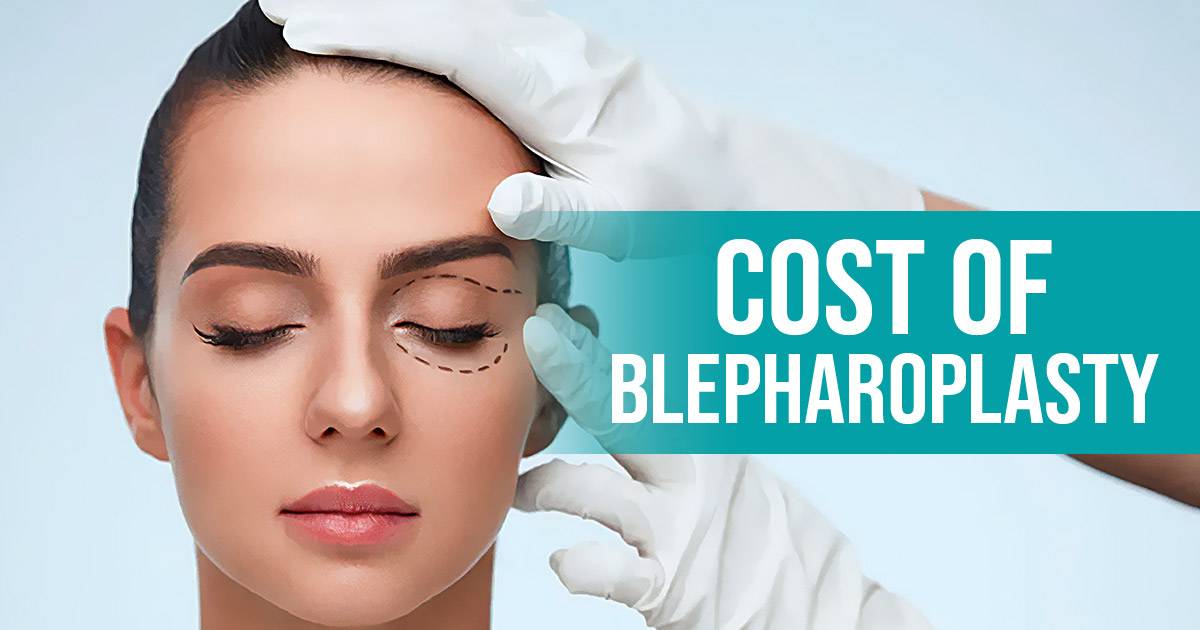How Much is the Average Cost of Blepharoplasty?

Eyelid surgery, or blepharoplasty, serves dual purposes, addressing both medical and aesthetic concerns. Here, we’ll talk about the cost of blepharoplasty, shedding light on the factors that may impact the expenses associated with the procedure. Furthermore, we explore the ideal candidates for this transformative surgery, providing insights into who may benefit most from undergoing eyelid surgery.
What is Blepharoplasty?
Blepharoplasty, a surgical intervention crafted to eliminate and firm up surplus skin surrounding the upper and lower eye regions, serves a dual purpose. The accumulation of sagging skin in these areas not only contributes to an older and more fatigued appearance but can also potentially compromise one’s vision.
Beyond its cosmetic benefits in restoring a more youthful look, blepharoplasty holds medical significance by enhancing the field of vision. This is achieved through the removal of obstructive sagging skin, aiming to alleviate vision impairment caused by the undue presence of excess tissue around the eyes.
What’s the average cost of eyelid surgery?
As per data from the American Society of Plastic Surgeons, the nationwide average cost of eyelid surgery stood at $4,120. However, it’s crucial to note that this figure is a general national average and not a definitive quote, as the actual cost can fluctuate for various reasons.
It underscores the importance of recognizing that individual circumstances and factors contribute to the variability in the pricing of blepharoplasty procedures, making it essential for individuals to seek personalized consultations for accurate cost assessments. For instance, the cost for hooded eyelid surgery may differ from a normal surgery due to the severity of the problem.
What does the average cost include?
The cost of blepharoplasty may include the following:
- Professional surgeon’s charges
- Facility expenses for hospital or surgical services
- Anesthesia charges
- Prescriptions covering necessary medications
- Medical examinations and tests
Factors that Affect the Final Pricing
Several factors can impact the total expense of a blepharoplasty procedure, including:
- Type of Anesthesia: Opting for general anesthesia can increase the procedure’s cost compared to local anesthesia.
- Health Insurance Coverage: If the blepharoplasty is deemed medically necessary, for instance, if drooping eyelids hinder daily activities, your insurance might cover part or all of the costs.
- Combination with Other Procedures: Pairing a blepharoplasty with a brow lift can enhance anti-aging effects. A forehead/brow lift specifically targets frown lines on the forehead, and when combined with blepharoplasty, it can offer more comprehensive rejuvenation, often at a reduced combined cost.
- Separate Upper and Lower Procedures: Sometimes, upper and lower eyelid surgeries are performed separately, potentially leading to higher overall costs if both are required.
- Pre-Surgical Costs: Expenses incurred before the surgery, such as medical tests and lab work to confirm candidacy for the procedure, as well as follow-up visits and medications, are usually not included in the initial cost estimate.
- Facility Fees: While blepharoplasty is often an outpatient procedure, requiring no hospital stay, scenarios necessitating an overnight stay can add to the cost.
Understanding these factors can help in anticipating the financial aspects of undergoing blepharoplasty and in planning accordingly.
Upper vs. Lower Blepharoplasty Cost
Blepharoplasty is often categorized into two types: upper and lower blepharoplasty. The upper variant targets the removal of excess skin from above the eye, which can enhance appearance and, in more extreme cases, improve vision by removing obstructive tissue. On the other hand, lower blepharoplasty is aimed at addressing sagging and puffiness under the eyes, aiding in rejuvenating the area and smoothing out wrinkles.
Should your situation warrant it, you might consider both upper and lower blepharoplasty. Opting for a combination of both procedures could lead to an increase in the overall cost of the treatment. This approach allows for a more comprehensive rejuvenation of the eye area, addressing multiple concerns in a single surgical session.
How to Know if You’re a Candidate for Blepharoplasty
An ideal candidate for blepharoplasty should be a physically sound adult with no pre-existing eye conditions, and preferably a non-smoker.
From a medical standpoint, an optimal candidate is someone currently grappling with vision-related challenges caused by excessive skin above the eye. If sagging skin is impinging on their eyesight, blepharoplasty offers a swift and efficient solution by eliminating surplus tissue and enhancing vision.
On the cosmetic front, a suitable candidate seeks a more youthful appearance, desiring the removal of wrinkles and fine lines and the reduction of eye puffiness. Given its compatibility with a brow lift, blepharoplasty emerges as an excellent option for combating the signs of aging comprehensively. Choosing the procedure can thus yield multifaceted benefits, addressing both cosmetic concerns and the effects of the aging process.
Determining the Cost of Blepharoplasty to Make an Informed Decision
Ready to rejuvenate your look or improve your vision with blepharoplasty? Take the first step towards a brighter, more youthful appearance and enhanced eyesight. Schedule a consultation today to explore your options, understand the costs involved, and learn how this transformative procedure can specifically benefit you. Embrace the opportunity to refresh your look and see the world more clearly—your journey to revitalization begins here!
